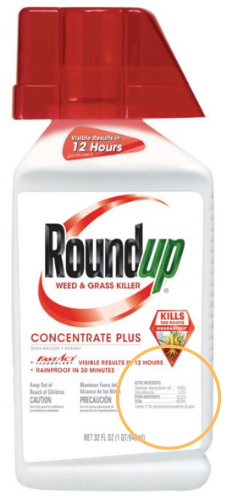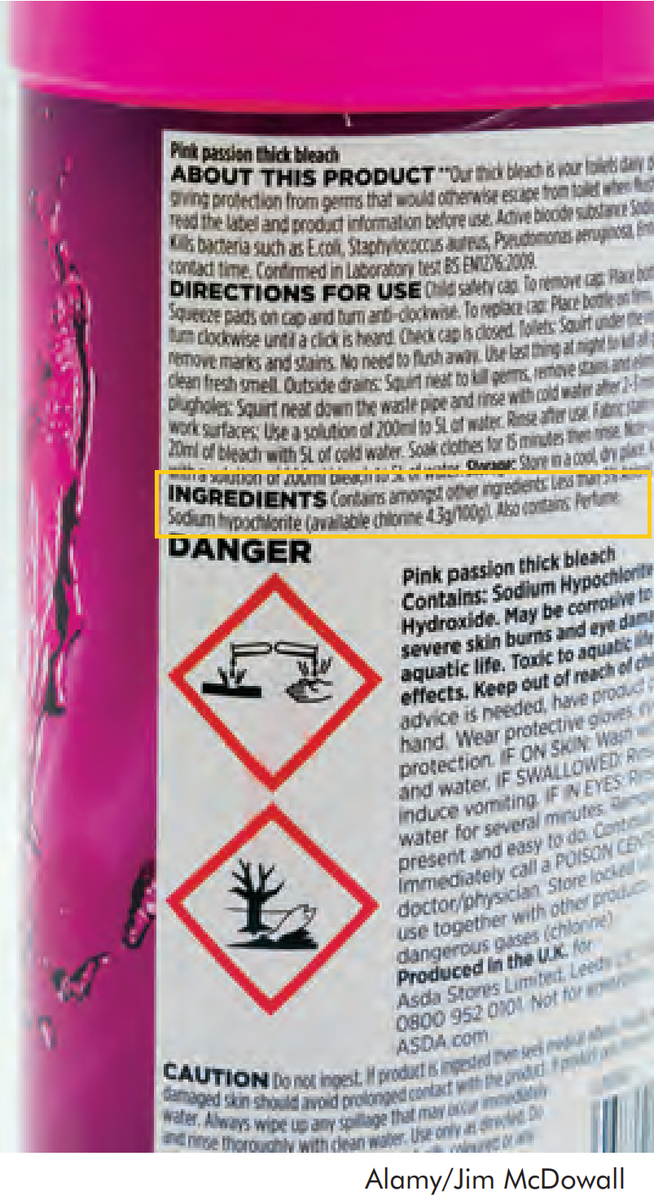Gateway on Pesticide Hazards and Safe Pest Management
How To Find Ingredients in Pesticide Products
Beyond Pesticides offers resources below to evaluate the health and ecological effects of specific chemical exposure from ACTIVE INGREDIENTS in pesticide products, as well as regulatory information and supporting scientific documents. Because various pesticide products can contain more than one active ingredient, it is important to READ the LABEL to determine chemical components.
With 192 different active ingredients and counting, it is essential to establish the connection between the use of these chemicals and their respective hazards.
View the step-by-step guide on how to search for the active ingredient(s) in pesticide products below:
- Go to U.S. EPA's Pesticide Product and Label System and enter the product name. The generic product name may vary.
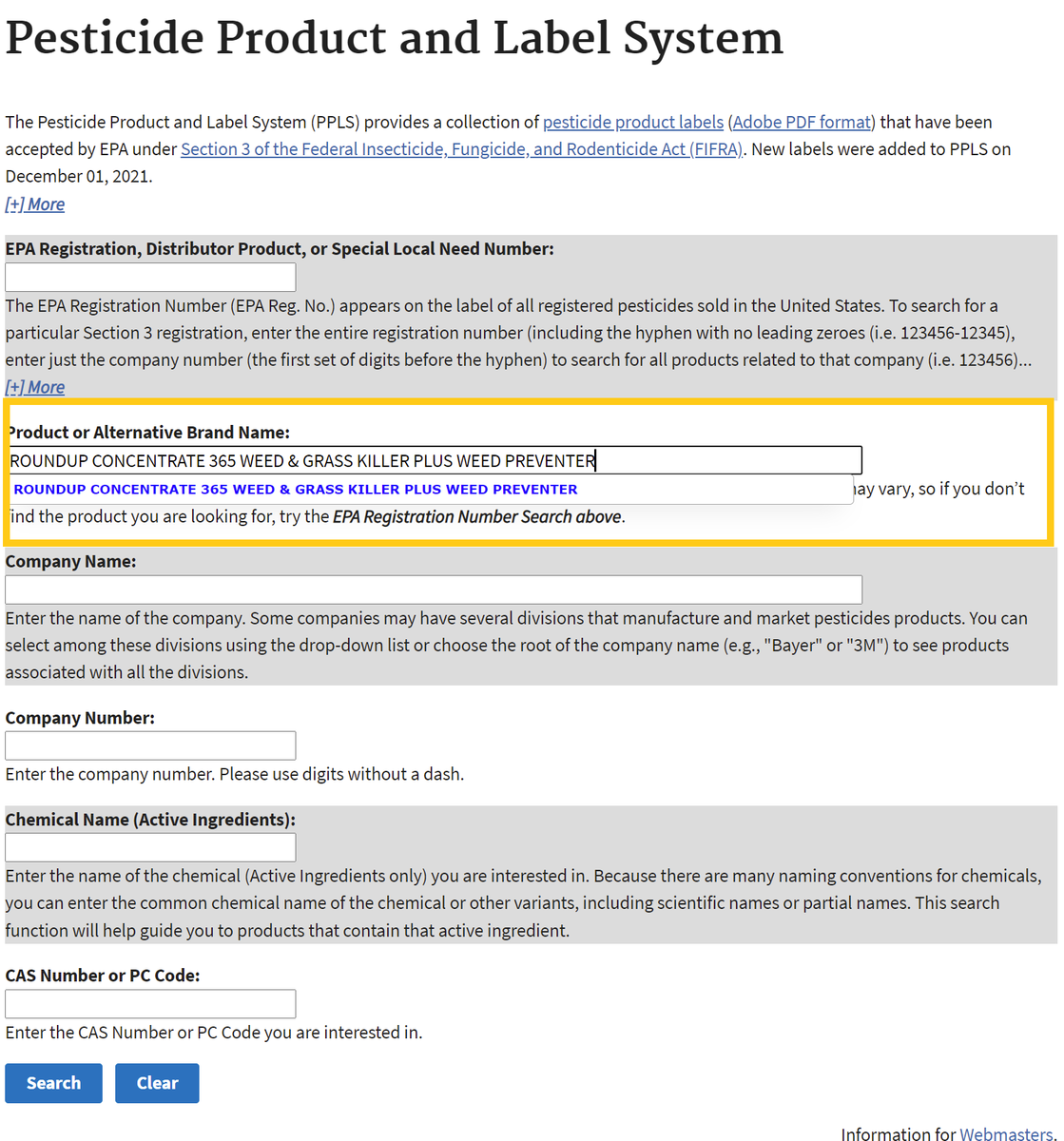
- After searching, click on the chemical ingredients tab or the link for the most recent label to find Active Ingredients.
Chemical List Label List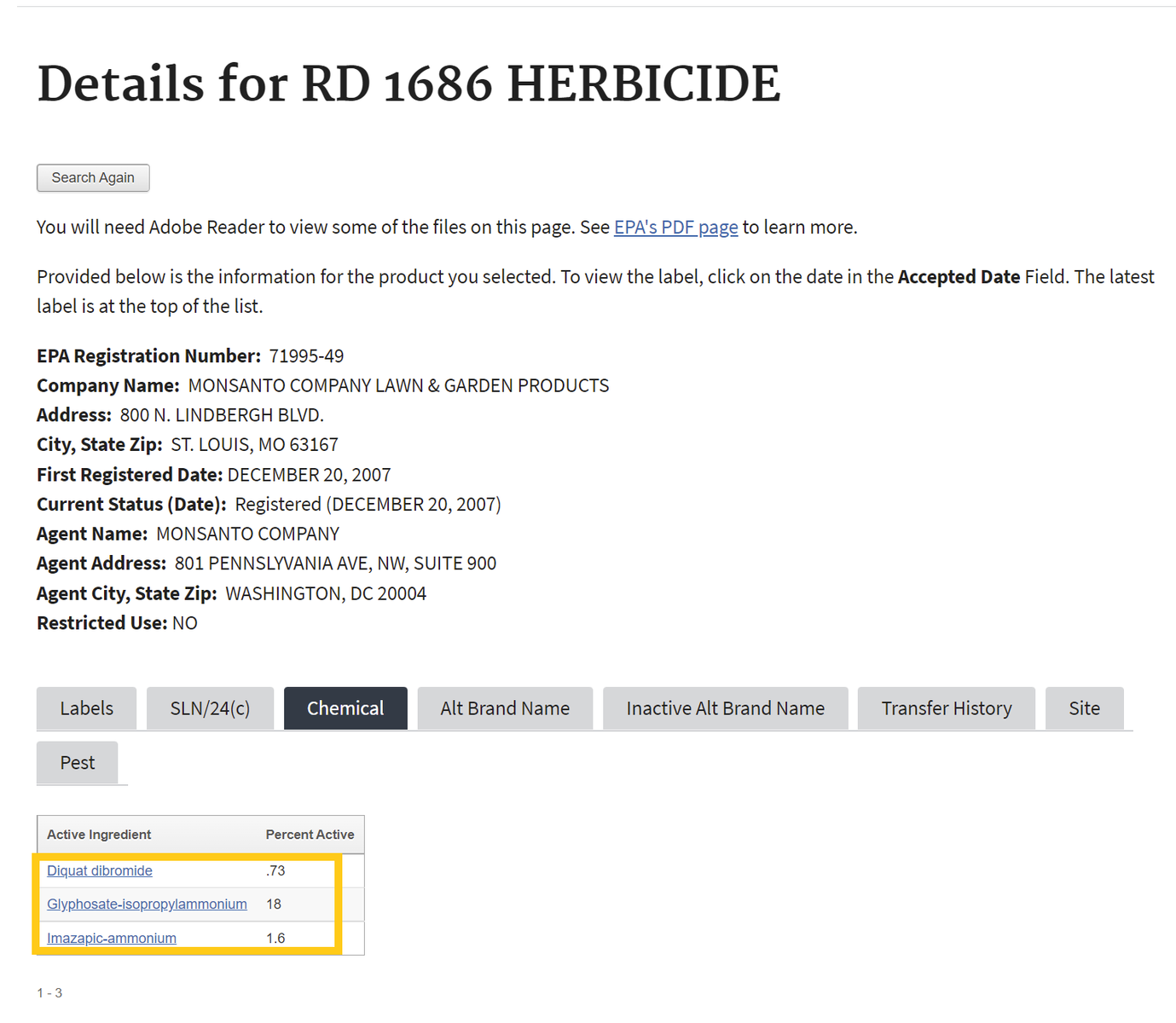
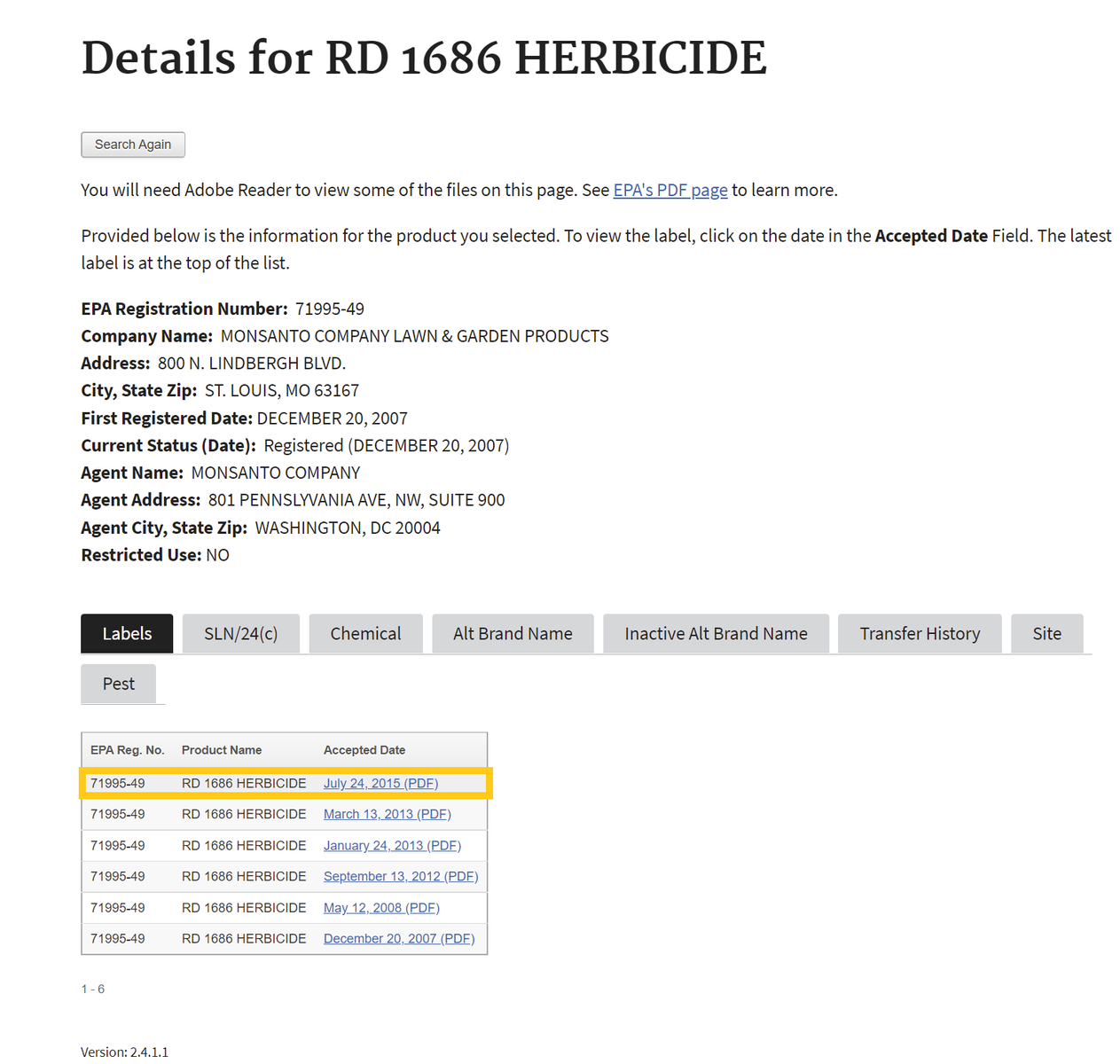
If one selects the chemical ingredients tab, skip to Step 4 . If not, proceed to step number 3 - To find the active ingredient(s) on the label, search for the page in the document containing the date of registration. Usually, the active ingredients section occurs within the first few pages of the label document.
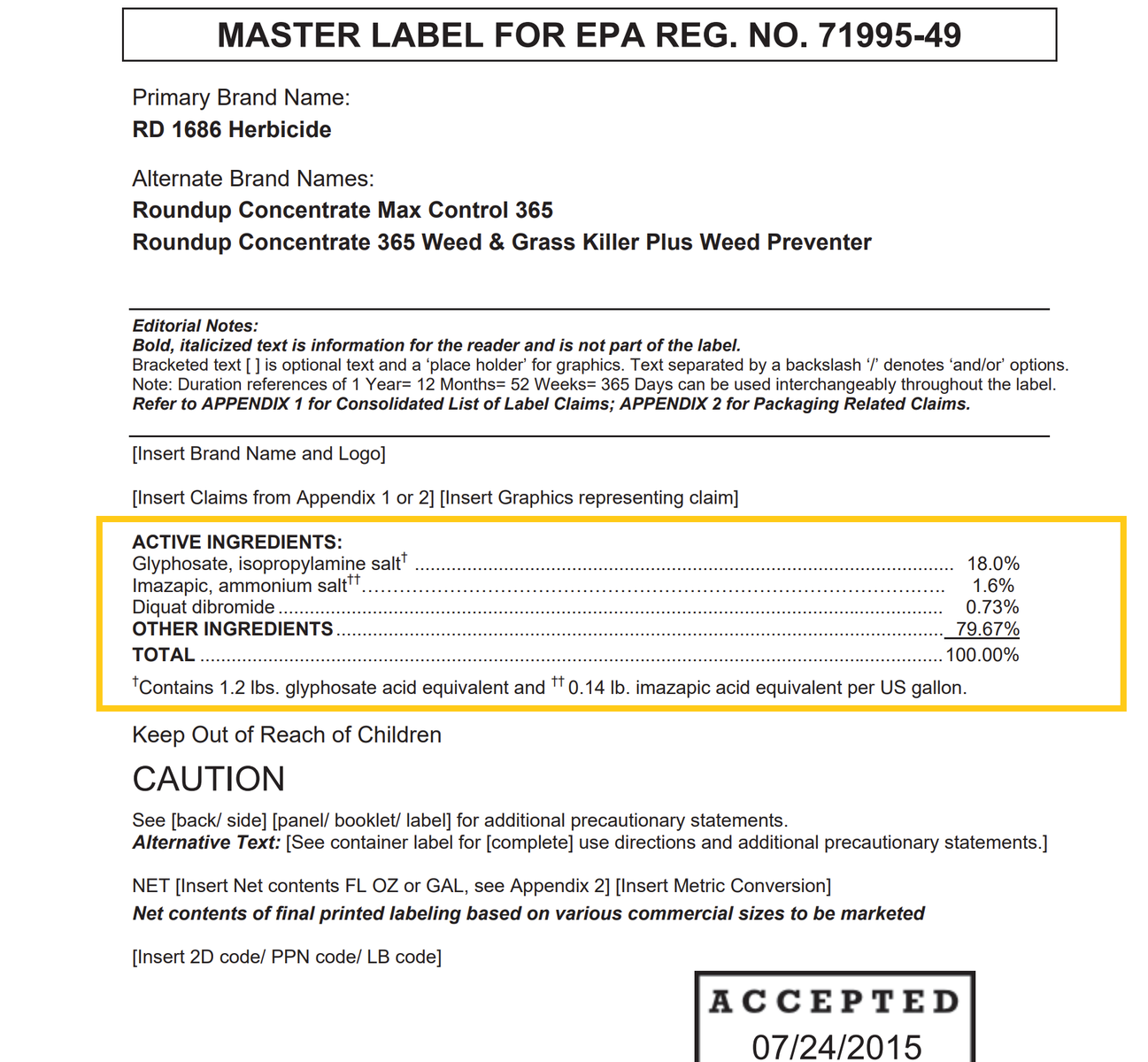
- Return to the Beyond Pesticides Gateway and search for the active ingredient name in the yellow box to the right or from the list below.
Allethrin
(includes all allethrin stereoisomers: d-trans allethrin, bioallethrin, S-bioallethrin, d-cis/trans allethrin)
General Information
- Product Names:
- Chemical Class: Pyrethroid
- Uses: Wasps and hornets, roaches, ants, fleas, and mosquitos, approved for residential, horticultural non food plants, commercial animal premise (indoor) misting systems
- Alternatives: Least-Toxic Insecticide
- Beyond Pesticides rating: Toxic
Health and Environmental Effects
- Cancer: Not documented
- Endocrine Disruption: Yes (30)
- Reproductive Effects: Not documented
- Neurotoxicity: Yes (4, 8, 34)
- Kidney/Liver Damage: Yes (4)
- Sensitizer/ Irritant: Yes (4)
- Birth/Developmental: Not documented
- Detected in Groundwater: Not documented
- Potential Leacher: No (27)
- Toxic to Birds: No (4)
- Toxic to Fish/Aquatic Organisms: Yes (4)
- Toxic to Bees: Yes (4)
Residential Uses as Found in the ManageSafe™ Database
Additional Information
- Regulatory Status:
- EPA Reregistration Eligibility Decision (RED) signed (6/2007)
- EPA Amended RED (05/2009)
- Supporting information:
- Extoxnet Pesticide Factsheet (Extension Toxicology Network)
- PAN Pesticides Database: (Pesticide Action Network)
- Studies:
- Mosquito repellent (pyrethroid-based) induced dysfunction of blood–brain barrier permeability in developing brain.Sinha, C et al. 2004. International Journal of Developmental Neuroscience
- Morphological changes in the respiratory system of mice after inhalation of mosquito-coil smoke. Cheng V, et al. 1992. Toxicology letters
- The action of allethrin on the peripheral nervous system of the frog. Joep Van Den Bercken. 1976. Pest Management Science
- Allethrin toxicity causes reproductive dysfunction in male rats. Madhubabu G, Yenugu S. 2017. Environ Toxicol. 32(6):1701-1710.
- The effect of follicullar fluid pesticides and polychlorinated biphenyls concentrations on intracytoplasmic sperm injection (ICSI) embryological and clinical outcome. Al-Hussaini, T. K., Abdelaleem, A. A., Elnashar, I., Shabaan, O. M., Mostafa, R., El-Baz, M. A. H., El-Deek, S. E. M., & Farghaly, T. A. (2018). The effect of follicullar fluid pesticides and polychlorinated biphenyls concentrations on intracytoplasmic sperm injection (ICSI) embryological and clinical outcome. European journal of obstetrics, gynecology, and reproductive biology, 220, 39–43. https://doi.org/10.1016/j.ejogrb.2017.11.003
- Acute Toxicity Study Of D-trans Allethrin And D-phenothrin To Zebrafish, Danio Rerio And Its Human Relevance. Hamid, Alif & Muhammad, Hussin & Lee, Siew Pien & Nik Hassan, Nik F. & Lokman, Isa. (2024). Acute Toxicity Study Of D-trans Allethrin And D-phenothrin To Zebrafish, Danio Rerio And Its Human Relevance. Community practitioner: the journal of the Community Practitioners' & Health Visitors' Association. 21. 243-250.








.png)
